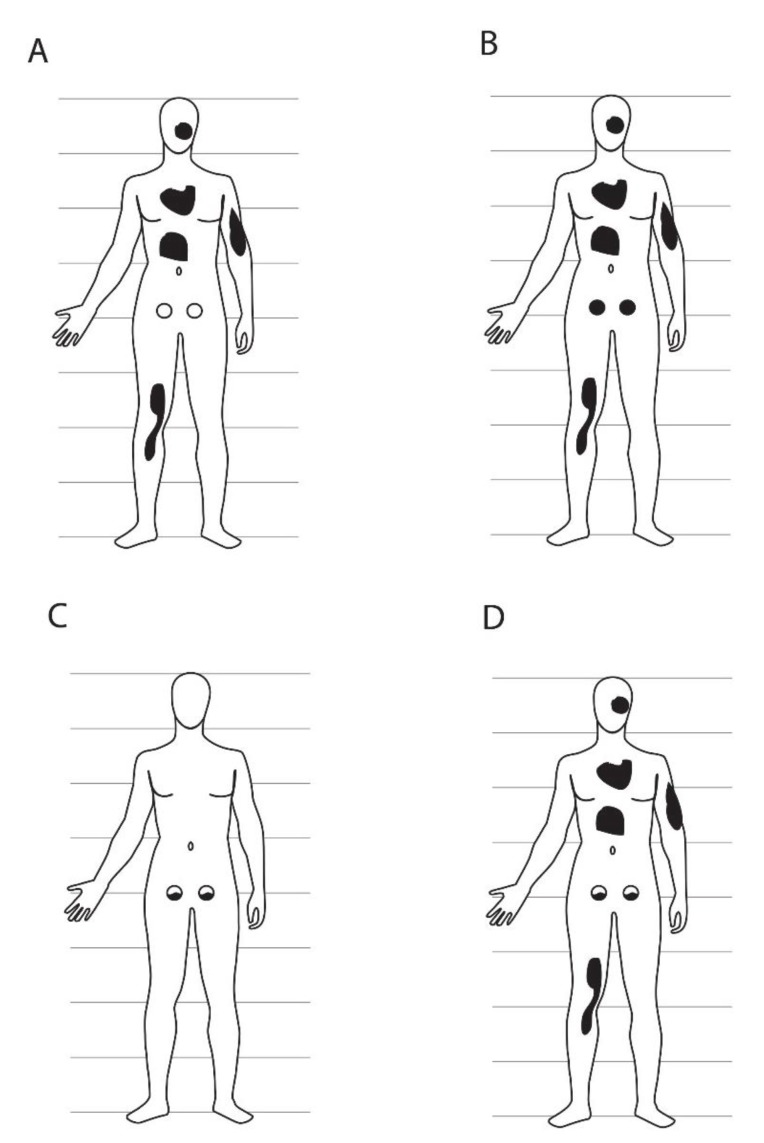Figure 2.
Potential anatomical patterns of mosaicism based on the lineage and mutational scenarios of Figure 1. Each panel is matched to the equivalent panel in Figure 1 (panel A, germ line clonal, mutation in soma; B, germ line clonal, mutation in cell ancestral to germ line and some of soma; C, germ line clonal, mutation in germ line; D, germ line not clonal, mutation in cell ancestral to some of germ line and some of soma). The germ line is presented as two circles in the lower abdomen, either wild type (unshaded) or mutant (black). Patches of somatic tissue carrying a de novo mutation are shown as irregular black shapes and may include skin and/or any other kind of somatic cells. In panels (C) and (D), germ line mosaicism is shown in both the right and left gonad, but other gonad patterns are likely as well, depending on how the primordial gonads are populated by PGCs. Relative sizes of the germ line versus soma are not to scale; the germ line in humans is obviously much smaller than the soma in physical size and cell number. Patterns of mosaicism are also not meant to be interpreted literally, other than inclusion or exclusion of all or part of germ line versus soma.

